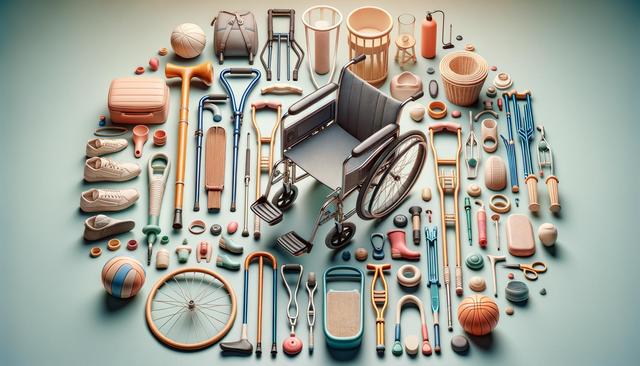Redefining the Look and Feel of Mobility Aids
Mobility aids have traditionally been associated with purely functional designs, often lacking visual appeal or comfort. However, a new generation of products is challenging this perception by introducing design elements that prioritize both ergonomics and aesthetics. These modern aids are not only practical tools but also accessories that integrate seamlessly with a user’s lifestyle. Sleek lines, lightweight materials, and foldable structures are central to this transformation, helping users feel more confident and less restricted in their daily movements.
What sets these newer models apart is the attention to user experience. Manufacturers are now focusing on:
- Contoured handles that reduce strain on the wrist and palm
- High-quality, durable materials like carbon fiber and aluminum
- Compact folding mechanisms for easy storage and transport
- Subtle color options that align with modern fashion trends
By moving beyond the medical appearance of past designs, these mobility aids now cater to individuals who value both form and function. This shift is especially important for younger users or those recovering from injuries who want support without drawing unwanted attention.
Comfort Meets Convenience in Everyday Use
One of the most notable features of these updated mobility aids is their ability to merge comfort with convenience. Lightweight yet sturdy, they are built to support users throughout the day without causing additional fatigue. Foldability allows users to quickly collapse the aid when not in use, making it ideal for commuting, traveling, or simply moving around spaces with limited storage.
Comfort-focused improvements also include:
- Shock-absorbing tips that reduce impact on joints
- Height-adjustable frames for tailored fit
- Breathable grip materials to prevent slipping
These thoughtful design updates make the experience of using a mobility aid far more pleasant. As a result, users are more likely to incorporate the aid into their daily routines consistently, which can support better mobility and overall health in the long run.
A Stylish Upgrade to Traditional Canes
While traditional canes serve their purpose, their often bulky and outdated design can make users feel self-conscious or limited in their outfit choices. The newer mobility aids offer a refreshing alternative. With a focus on minimalism and contemporary design, these aids are being embraced as fashionable accessories rather than clinical necessities.
Style-conscious users can now choose from:
- Matte and metallic finishes for a modern aesthetic
- Foldable designs that fit into bags or briefcases
- Customizable elements such as interchangeable grips or decorative accents
This customization not only enhances self-expression but also encourages a sense of ownership and pride in the product. By aligning with personal style, these mobility aids can help break down social stigma and empower individuals to move with confidence.
Who Can Benefit from Modern Mobility Aids?
The appeal of these innovative mobility aids extends across a wide demographic. While they are certainly beneficial for older adults seeking reliable support, they are also gaining popularity among younger individuals with temporary injuries or chronic conditions. The discreet, stylish design makes them particularly attractive for people who want support without compromising their appearance.
Groups that may find these aids especially useful include:
- Young professionals recovering from surgery or injury
- Frequent travelers who need compact, portable support
- Individuals with chronic pain conditions like arthritis or fibromyalgia
- Active seniors looking for a more modern alternative
Because these mobility aids are designed with everyday life in mind, they are well-suited for diverse environments—whether navigating city streets, attending social events, or simply running errands. Their versatility makes them an excellent option for a broad range of users.
Making the Transition: What to Consider
For those considering making the switch to a more modern mobility aid, there are several factors to keep in mind. The goal is to find a product that aligns with both your physical needs and personal preferences. It’s important to test different models to determine which grip, height, and folding mechanism feels most natural for your daily routine.
Key considerations include:
- Weight capacity and stability
- Ease of folding and unfolding
- Grip comfort and handle shape
- Storage options and portability
Consulting with a healthcare provider or mobility specialist can also be helpful in selecting the right model. With the wide range of options now available, users can find a mobility aid that not only supports their movement but also complements their lifestyle and aesthetic tastes.
Conclusion: Embracing Mobility with Confidence
Today’s mobility aids have evolved far beyond their utilitarian origins. By combining ergonomic advancements with sleek, stylish design, they offer users a meaningful upgrade in both function and form. Whether you’re recovering from an injury or managing ongoing mobility challenges, these contemporary aids provide a discreet, comfortable, and fashionable solution. Adopting a mobility aid no longer means compromising on style or convenience—instead, it can be an empowering step toward greater independence and confidence in everyday life.






